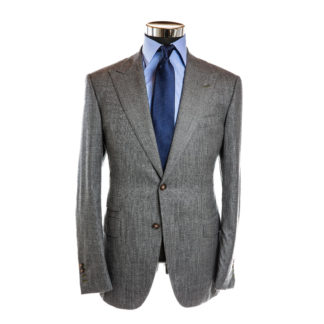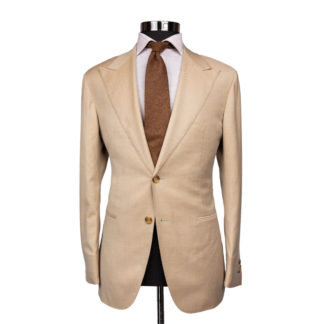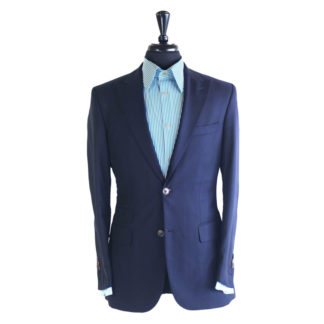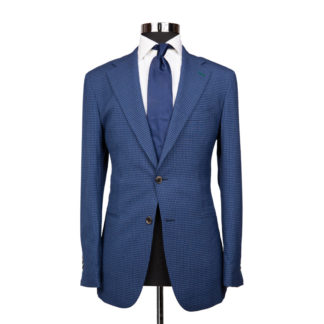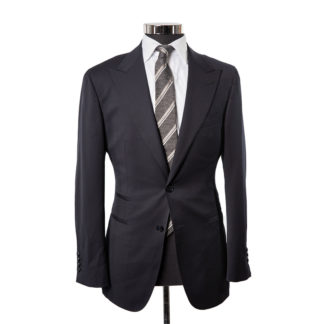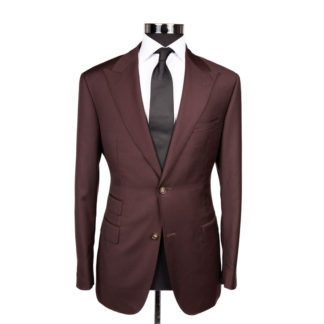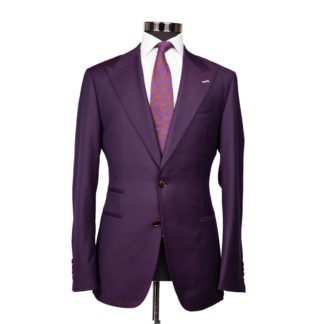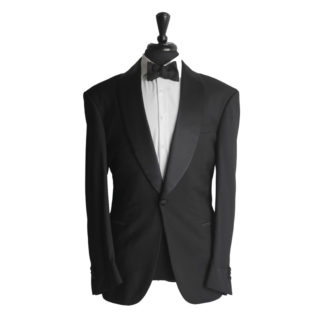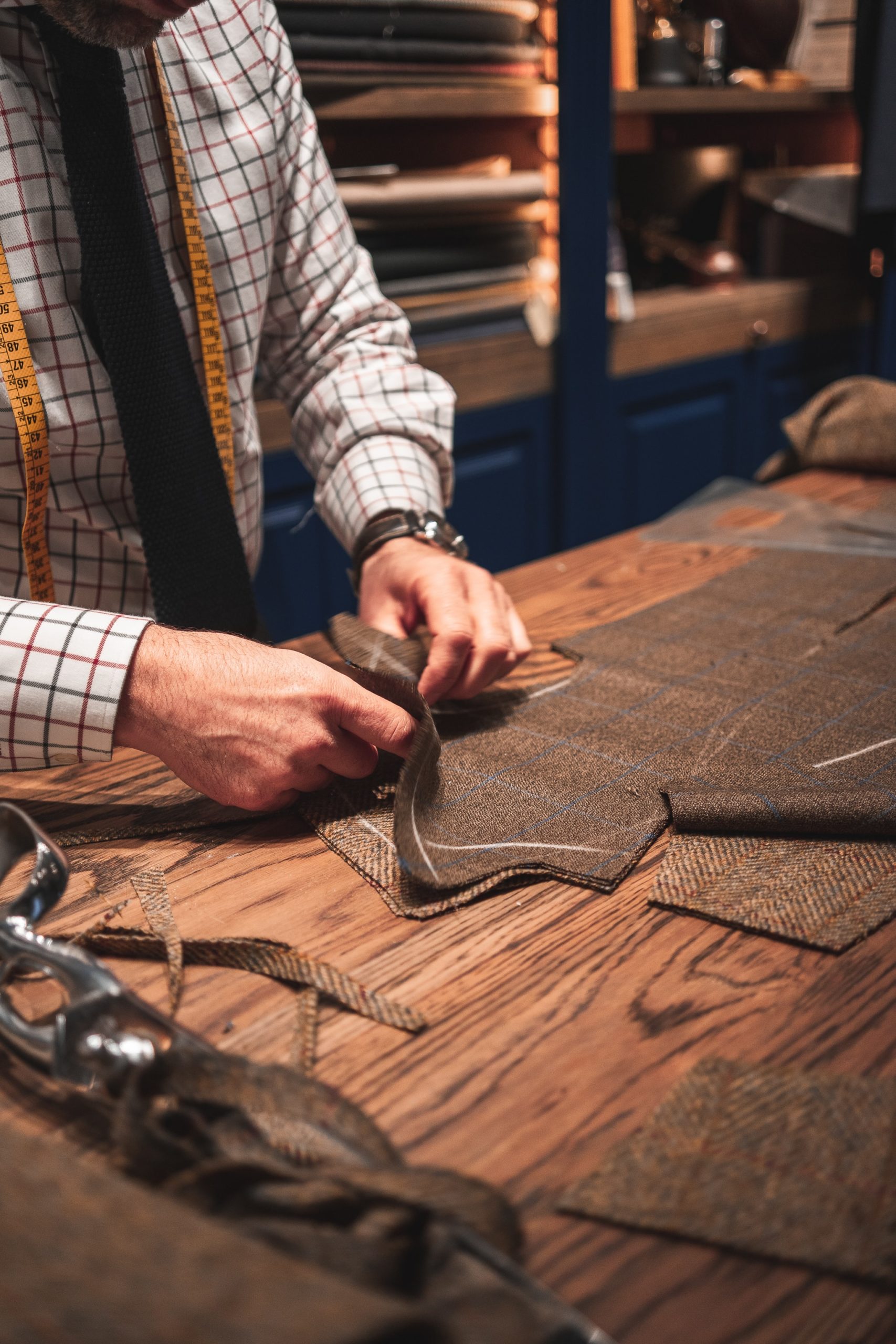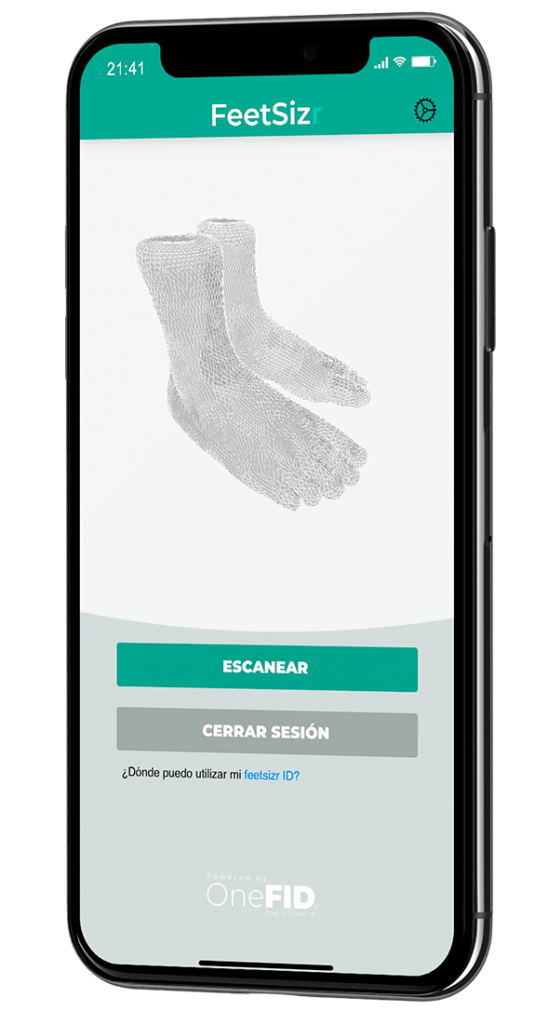The lapel is one of the most noticeable aspects of a suit. It works to frame your shape and draw the attention of a viewer’s eye to preferred features and attributes. There are many lapel varieties and they each work for you a bit differently; they are each suited for different occasions and each do different things to work with your shape and features.

Lapel Varieties: The Basics
Before we get into the different styles, let’s discuss the basics of lapels. Just what exactly is a lapel? A lapel is the matching parts on each side of the jacket, right below the collar, where the fabric folds back towards the shoulders. The average width for a lapel is 3.5 inches, but they can range anywhere from 2 to 5.
Which Width?
Slim lapel varieties
Skinny lapels have rapidly risen in popularity in recent years: they are very on trend, but it’s important to know what width is best for your body. Slim lapels work best on slim guys. If your frame is more on the broad side, avoid the slim lapel, as the proportions will be off and your body will overwhelm the lapel, making it look like it doesn’t fit properly.
Wider lapel varieties
Wider lapels – in the 4 to 5 inch range – typically work best with broad frames. Our signature Wide Lapel Suit, “Houndstooth” is a classic wide lapel suit that accentuates a broad frame.
However, that’s not to say skinny guys should avoid them entirely. If you go slightly wider than average with your lapel as a skinnier guy, you can broaden your frame. Just don’t go too wide since that can let the lapel swallow your look.
Wide Lapel Collection from H|M
Lapel Varieties: A Lapel for Every Man
Now that we’ve covered how to find the correct lapel width for your body and situation, let’s talk about lapel varieties, or the different styles of lapels. The three types of lapels are notched, peak, and shawl. They each best work with different suit styles and on different shapes. Here are the need-to-know basics of the different styles.
The Notched Lapel
A notched lapel is the most common type of lapel. It is called notched because the two layers of the lapel meeting together form a sideways V-shape, or a ‘notch’. It’s the easiest to produce, and therefore the cheapest, but it’s also preferred for most everyday suits.
When to wear it
You’ll want to wear a notched lapel on a single-breasted suit. It is the standard lapel found on most suits directly off the rack. It is wonderfully versatile and works for most business attire, nice dinners, and other semi-formal events. If you only have one suit, make it a notch, as it will work for most events.
What to look for
When selecting a suit with a notched lapel, you want to look at the size of the notch in comparison to the width of the lapel. They should be in even proportions: if you have a slim lapel, you want a smaller notch. If the lapel is bit wider, look for a larger notch. This helps keep the look balanced, and ensures that the lapel doesn’t overwhelm the jacket.

Peak Lapel Design
The second lapel variety is the peak lapel. It is called the peak because the lower half of the lapel has corners that angle upwards towards the shoulders. Those corners form a “peak” on each side of the jacket. It’s the most expensive style because of all the angles involved in production, but it’s got an edge to it that will always make you stand out.
When to wear it
The peak lapel is excellent for shorter frames because the upward angle of the peak draws the eye upwards, visually adding more height to your frame. It’s also good for more heavyset gents, for the same reason – drawing the eye up and lengthening the frame. Peak lapels are great for more formal events or situations: executive-style business meetings or functions, galas, formal weddings, or parties that call for evening-wear.
What to look for
For the width of a peak lapel, you want to avoid going too slim. That’s because it can look cluttered and you can lose some of the detail when making a peak too small.

Shawl Lapel: For Men in Black
The shawl lapel foregoes any edges; it rounds out in a continuous curve, no notches or peaks to be found. It is best to opt for a thinner, slimmer lapel if you’re going to be wearing a shawl style jacket – it makes for a sleek look. Shawl lapels aren’t the best choice for heavier guys or those with a round face, as the curve of the lapel can accentuate the curves of the body and face. The shawl lapel is almost always limited to tuxedos and black tie events – it’s used in only the most formal of situations.
A Final Note About Lapel Varieties
As we’ve discussed here, lapels are important. They are one of the most stand-out aspects of a suit and the lapel varieties require quite a bit of consideration when you’re browsing for your look. There are many things to consider, the most major ones being your shape, the lapel width, and the lapel style. Now that we’ve discussed the basics, and some of the more in-depth concepts surrounding lapels and the lapel varieties that are available, you’re armed with all the info you need to find the perfect lapel, just for you, right here at HARTTER MANLY. Check out some of the lapel varieties on our Suits or Sports Jackets.

